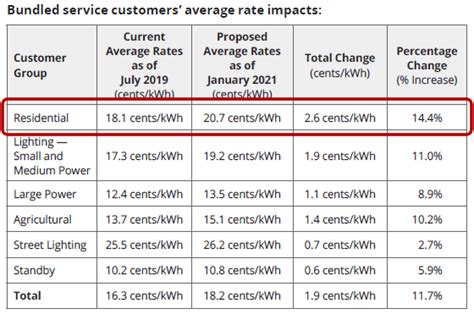Maximize Your Savings: Understanding Southern California Edison’s Solar Rebates
As the demand for renewable energy continues to grow, homeowners in Southern California are increasingly turning to solar power. Southern California Edison (SCE), one of the largest electric utilities in the region, offers a variety of solar rebates and incentives designed to make solar energy more accessible. Understanding these incentives can help you maximize your savings and make a more informed decision about investing in solar technology.
Understanding Solar Rebate Programs
SCE’s solar rebate program aims to encourage residential and business customers to adopt solar energy. The incentives are part of broader efforts to promote clean energy and reduce reliance on conventional fossil fuels. By participating in these programs, you can significantly reduce the upfront cost of installing solar panels.
Types of Solar Rebates and Incentives Offered
Southern California Edison offers several types of rebates and incentives to help homeowners invest in solar energy. These include:
- California Solar Initiative (CSI): This program provides financial incentives for the installation of solar energy systems based on the amount of energy they produce. While the rebate amounts are decreasing over time, early adopters can still benefit from substantial financial assistance.
- Net Energy Metering (NEM): This program allows solar customers to receive credits for excess energy produced by their systems. The credits can offset future energy costs, effectively lowering your electricity bill over time.
- Federal Investment Tax Credit (ITC): Although not exclusive to SCE, this federal program allows you to claim a tax credit of 26% of the total cost of your solar energy system when filing your federal taxes. This incentive can significantly reduce your net cost and is set to decrease in the coming years.
- Local Government Incentives: Various local programs may also provide additional rebates or financing options to promote solar energy adoption in specific cities or counties within SCE’s service area.
How to Qualify for Solar Rebates
Qualifying for solar rebates from SCE involves several steps:
- Site Assessment: A qualified solar installer will conduct a site assessment to determine your home’s suitability for solar panels. This includes evaluating your roof’s orientation, shading, and structural integrity.
- System Design: Once the assessment is complete, your installer will design a solar system tailored to your home’s energy needs and the available rebates.
- Installation: After you approve the design and receive appropriate financing, your solar system will be installed according to SCE’s guidelines.
- Interconnection Agreement: You must apply for and sign an interconnection agreement with SCE to connect your solar energy system to the grid. This is a crucial step to ensure you can benefit from NEM credits.
- Rebate Application: Finally, your installer will help you complete the necessary paperwork to apply for rebates through SCE’s program. It’s essential to ensure all information is accurate to avoid delays.
Benefits of Going Solar in Southern California
In addition to the financial incentives offered by SCE, there are many other benefits to going solar in Southern California:
- Environmental Impact: Solar energy is a clean, renewable resource that reduces your carbon footprint and helps combat climate change.
- Energy Independence: By generating your power, you become less reliant on utility companies and fluctuations in energy prices.
- Increased Property Value: Homes equipped with solar panels often have higher resale values, making it a sound investment for future homeowners.
- Low Maintenance Costs: Solar systems typically require minimal maintenance, making them a hassle-free energy solution.
Common Misconceptions about Solar Energy
Despite the numerous advantages, many homeowners still hold misconceptions about solar energy systems:
- High Upfront Costs: While the initial investment can be significant, rebates and financing options can lower costs considerably. With the combination of federal and state incentives, many homeowners find that solar is more affordable than they initially thought.
- Solar Only Works in Sunny Conditions: Although solar panels perform best in direct sunlight, they can still generate electricity on cloudy days. Advanced technology allows systems to capture ambient light effectively.
- Only New Homes Can Go Solar: Existing homes can also benefit from solar energy. Many homeowners retroactively install solar systems after moving in, often taking advantage of various incentives.
Conclusion
Investing in solar energy through Southern California Edison’s rebate programs presents an excellent opportunity for homeowners to maximize savings while contributing to a cleaner environment. By understanding the available incentives and following the proper steps to qualify, you can make a well-informed decision that pays off in the long run. The combination of federal, state, and local incentives ensures that solar energy is more accessible than ever before. With the predicted rise of energy costs, making the switch to solar is not only a smart financial move but also a progressive one for the future.
FAQs
1. What is the California Solar Initiative (CSI)?
The California Solar Initiative (CSI) is a program designed to promote the installation of solar energy systems among residential and commercial customers by offering financial incentives based on the energy produced.
2. How do I apply for solar rebates from SCE?
You can apply for solar rebates after your system is installed through your solar installer, who will assist you in completing the necessary paperwork.
3. Does SCE affect my property taxes if I install solar panels?
In California, the installation of solar panels typically does not increase your property taxes. Additional incentives, such as the California Solar Property Tax Exclusion, support this benefit.
4. Are solar panels worth the investment?
Yes, many homeowners find that the savings on their electricity bills, combined with available incentives, make solar panels a worthwhile investment over time.
5. Can I install solar panels myself?
While DIY installations are possible, hiring a qualified solar installer is recommended to ensure compliance with state codes and maximize safety and efficiency.
Download So Cal Edison Solar Rebates
